
Mizoram is a state in northeast India, with Aizawl as its seat of government and capital city. The name of the state is derived from "Mizo", the endonym of the native inhabitants, and "Ram", which in the Mizo language means "land." Thus "Mizo-ram" means "land of the Mizos". Within India's northeast region, it is the southernmost landlocked state, sharing borders with three of the Seven Sister States, namely Tripura, Assam and Manipur. The state also shares a 722-kilometre (449 mi) border with the neighbouring countries of Bangladesh and Myanmar.
The Mizo people, historically recorded as the Lushais, are an ethnic group native to the state of Mizoram in India and neighbouring states of Northeast India. The majority of Mizos outside of India reside in the town of Kalay in Myanmar, making up 55% of the town's population. They speak the Tibeto-Burman language of Mizo, the official language and lingua franca of Mizoram. The state has one of the highest literacy rates in India, at more than 90%.
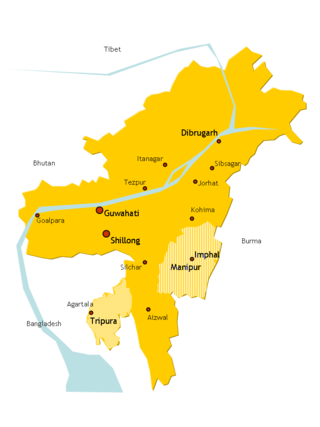
The history of Mizoram encompasses the history of Mizoram which lies in the southernmost part of northeast India.

Lunglei is a town, situated in the south-central part of Mizoram state, northeastern India.

Tlabung, formerly known as Demagiri, is a census town in Lunglei district in the Indian state of Mizoram.

Lunglei district is one of the eleven districts of Mizoram state in India. As of 2011 it is the second most populous district in the state, after Aizawl.

Serchhip District is one of the eleven districts of Mizoram state in India. The district occupies an area of 1421.60 km2. Serchhip town is the administrative headquarters of the district. This district came into existence on 15 September 1998, being carved out of the larger Aizawl District. Because of the way it was created it includes part of East Lungdar Tehsil and part of Thingsulthliah Tehsil.
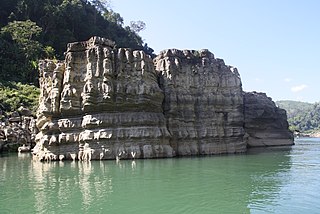
Lawngtlai district is one of the eleven districts of Mizoram state in India.

Tamil Nadu is one of the most literate states in India. The state's literacy rate is 80.33% in 2011, which is above the national average. A survey conducted by the Industry body Assocham ranks Tamil Nadu top among Indian states with about 100% Gross Enrollment Ratio (GER) in primary and upper primary education.

Sarva Shiksha Abhiyan, or SSA, is an Indian Government programme aimed at the universalisation of Elementary education "in a time bound manner", the 86th Amendment to the Constitution of India making free and compulsory education to children between the ages of 6 and 14 a fundamental right. The programme was pioneered by former Indian Prime Minister Atal Bihari Vajpayee. It aims to educate all children between the ages of 6 and 14 by 2010. However, the time limit has been pushed forward indefinitely.
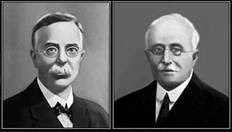
James Herbert Lorrain, or Pu Buanga, was a Scottish Baptist missionary in northeast India, including Mizoram, Assam, and Arunachal Pradesh. He and Frederick William Savidge reduced the Lushai language to writing—devised an alphabet using Roman lettering and phonetic form of spelling based on Hunterian system translation; compiled grammar and dictionaries for missionary activities and clerical administration.
The Mizoram College Teachers' Association (MCTA) is a governmental, non-political and non-profit organisation for college teachers under the Government of Mizoram, India. It was established by a conference of college teachers on 7 September 1979 at Aizawl, which became its headquarters. The organisation is recognised by the Government of Mizoram, and consists of 21 government colleges and 1 grant-in-aid college.

Frederick William Savidge was a pioneer English Christian missionary in northeast India. He and James Herbert Lorrain brought Protestantism to Mizoram, and some parts of Assam and Arunachal Pradesh. Together they were entirely responsible for the creation of written language in Mizo, beginning of literacy, origin of formal education and establishment of churches in Mizoram. They devised the original Mizo alphabets based on Roman script, prepared the first book and dictionary in Mizo, started the first school among the Mizos. Mizoram has become the most Christian populated state in India. As a professional educator Savidge was single-handedly responsible for introducing quality education in Mizoram. He is deservedly known as the Father of Mizo Education.
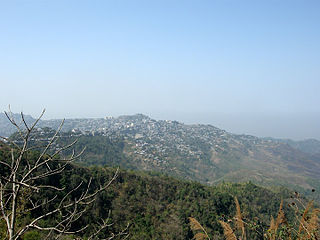
Sêrkâwn is a village within Lunglei Administrative Block, Mizoram, India. It is continuous with Lunglei within 1 km area. It is 107 km from the state capital Aizawl. The place chosen by British missionaries, it is the home of Christianity and formal education in southern Mizoram. The oldest schools and hospital in southern Mizoram were established there. It still is the centre of administration of Baptist Church of Mizoram.
Edwin Rowlands was a Welsh Christian missionary in northeast India and Burma. He was a professional teacher, singer, composer, poet, translator and literary figure among the Mizo people. He was regarded as the most beloved of all British missionaries in Mizoram. He was more popularly known as Zosapthara. He made the major hymns in Mizo and Khumi which are still in use. He modified the original Mizo alphabet and his system became the standard in Mizo language. He created written language for Khumi people in Burma, and for Bhil people in Maharashtra. His literary works are the foundation of Mizo literature. He was the first administrator of education in Mizoram as Honorary Inspector of Schools. Despite objection from various corners he married Thangkungi, a Mizo girl.

The history of Christianity in Mizoram covers the origin and development of all forms of Christianity in Mizoram since the British occupation at the end of the 19th century. Christianity arrived as a consequence of tribal warfare, raids of British plantations, and the ensuing punitive British military expedition called the Lushai Expedition of 1871. The subsequent annexation of the erstwhile Lushai Hills to the British Empire opened the gateway for British Christian missions to evangelise the Mizo people.
Sângthankima is a humanitarian and social worker in Mizoram, India. He is the founder of Thutak Nunpuitu Team (TNT), a voluntary organisation, which runs the largest charitable institution in Mizoram. His institution, a registered society since 1991 under the Firms and Societies in India, started as a rehabilitation society for alcoholics in Champhai town. With donation of a plot of land in Aizawl city, it expanded into an orphanage with formal school, health centre, and sanatorium. In addition to more than a dozen of awards for his social service, Sangthankima has received an honorary doctorate (D.H.L.) from Rangoon's Methodist Bible College in 2008, Achievers Award 2013 For NGO, Mother Teresa Awards for Social Justice in 2014, and the Mizo Award of 2014.
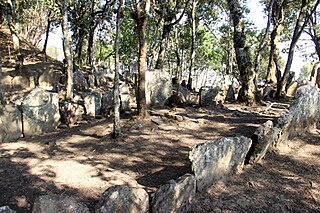
Mizoram is a state in the northeast of India. Mizoram is considered by many as a beautiful place due to its landscape and pleasant climate. There have been many attempts to increase revenue through tourism but many potential tourists find the lack of amenities to be a hurdle. However, the State continues to promote itself and many projects have been initiated. The tourism ministry continues to maintain or upgrade its tourist lodges throughout the state. Foreign tourists are required to obtain an 'inner line permit' under the special permit before visiting. The permit can be obtained from Indian missions abroad for a limited number of days or direct from Mizoram Government authorities within India. The state is rich in bird diversity, which has the potentiality to make it a major birding destination. Mizoram is a stronghold for Mrs. Hume's pheasant. There is also a rare record of the wild water buffalo from the state. There are several past records of the Sumatran rhinoceros from Mizoram, then Lushai Hills. The small population of wild elephants can be seen in Ngengpui and Dampa Sanctuaries.

The following outline is provided as an overview of and topical guide to Mizoram:

Aizawl is the capital of the state of Mizoram in India. Aizawl was officially established on 25 February 1890. With a population of 293,416, it is the largest city in the state. It is also the centre of administration containing all the important government offices, state assembly house and civil secretariat. The population of Aizawl strongly reflects the different communities of the ethnic Mizo people.
















